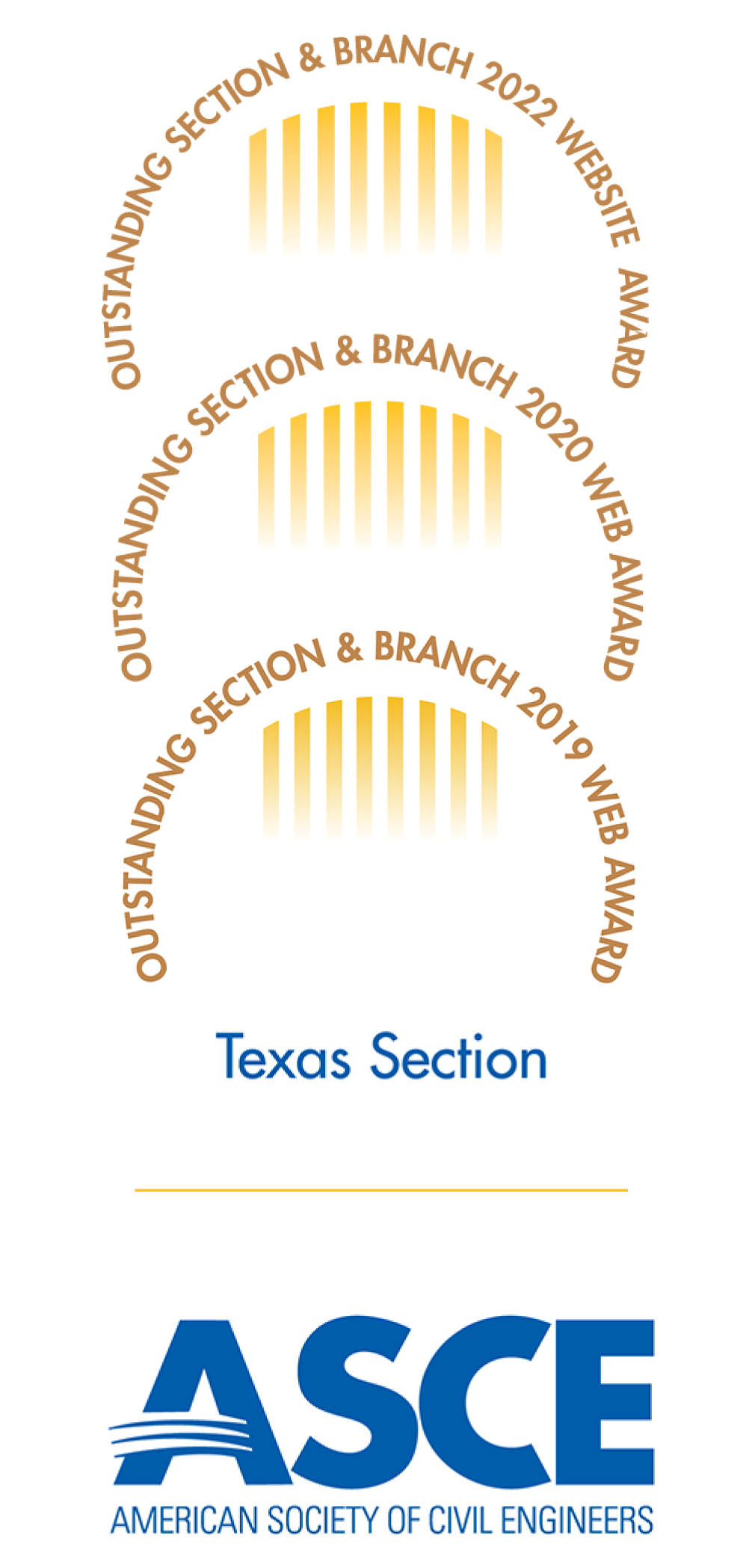Galveston Bay’s Wagon Bridge
by Melinda Luna PE, Chair, History & Heritage Commitee

In 1890, Galveston was Texas’ third largest city, behind Dallas and San Antonio. The only way to get there was by train or boat. During the Civil War, soldiers would place planks on the railroad structure built in the 1860’s and walk to the island. When mainland residents saw how the soldiers were walking to the island, they had the idea to build a bridge to accommodate wagons so they could sell their produce directly to the people of Galveston.
Galveston County started to organize the idea for a causeway or bridge in 1891. After forming committees, they discussed how to finance the bridge and what would be built. They asked themselves if the bridge should be built for wagons only or if a railway should also be included. To keep costs lower, they decided to build a wagon-only bridge, which became known as the Galveston Bay Wagon Bridge. Wagons would bring the primary traffic to the bridge since automobiles were not common until the 1910s. The county then began receiving unsolicited proposals. One engineer proposed a rock rubble causeway with a movable span; however, when he tried securing a review with the United States government, it was denied. The review noted that this type of crossing would limit the flow of water in the bay.
Commissioners brought two engineers into a meeting to elect an engineer to represent the best interest of the county. Major B. M. Temple was first elected engineer. He reviewed plans and specifications for five companies who proposed various bridge options. After reviewing the options, Temple chose Missouri Valley Bridge and Iron Works of Leavenworth, Kansas. He then learned the bid exceeded the bonds that the county has sold. After much negotiation, builders A. J. Tullock and Missouri Valley Bridge and Iron Works agreed to build the bridge for $175,00, a far lower cost than they initially estimated.
Major Temple went on to work for the Gulf, Colorado, and Santa Fe Railroad, and H.C. Ripley took over as engineer for the county. Ripley’s background included earning a degree in civil engineering from the University of Michigan in 1870. He then moved to Galveston to map the Galveston Bay and decided to stay.
Galveston Bay Wagon Bridge construction started in 1892. The bridge contained 95 spans that were 80 ft long. Pratt through trusses were used with these spans, and the entire bridge was an impressive 11,299.2 ft long. The piles and caps were concrete, though there were some cedar piles. Construction materials also included 1.5 million pounds of steel and 1.5 million linear feet of lumber.
The public stayed informed on the the progress of the bridge through reports Ripley would send the local paper, which eventually also advertised a 3-day celebration of the bridge’s completion. Due to various changes, the bridge was completed over budget at $191,986, which is about $58.5 million in today’s dollars, according to an inflation calculator.
The bridge was advertised as the longest steel-span wagon-only bridge in the United States, although there was a railroad bridge over Lake Ponchatrain that was longer. The 3-day event celebrating the completion of the Galveston Wagon Bridge took place November 15-17, 1893 and featured parades, fireworks and wagon contests. Many businesses even decorated for the celebration.
News of the bridge eventually spread beyond Galveston, first with Scientific American featuring it in 1884. That same year, at World’s Fair, the Galveston Bay Wagon Bridge project was presented to international civil engineers. This group of civil engineers could not believe such a long bridge could be built at those costs. Other areas, such as Corpus Christi, also took note of the bridge as they also wanted bridges to connect to North Padre Island.
The people of Galveston celebrated the bridge until the first time there was an accident on it, causing it to be closed for evaluation. The draw bridge at the center was damaged in September 1895 and again in May 1896. When these damages happened, the bridge was closed for a week. Every time an accident happened on the bridge, the engineer would have to run out and evaluate the damage to it, which meant they would have to close it. The Galveston Bay Wagon Bridge was destroyed by the 1900 hurricane (its first encounter with severe weather), and again Galveston was left without a connection to the main land.
If it were still standing today, the Galveston Bay Wagon Bridge would be one of Texas’ longer bridges. Currently, the longest bridge over a waterway in Texas is the Queen Isabella Memorial Bridge at 12,510.5 ft long.
Although it was destroyed, the Galveston Bay Wagon Bridge bridge showed people that it was possible to build a bridge that would attract tourism to the area. Today, bays like Lavaca, Nueces and Galveston Bay now have bridges that provide a safe crossing for the public.
Share this story:








